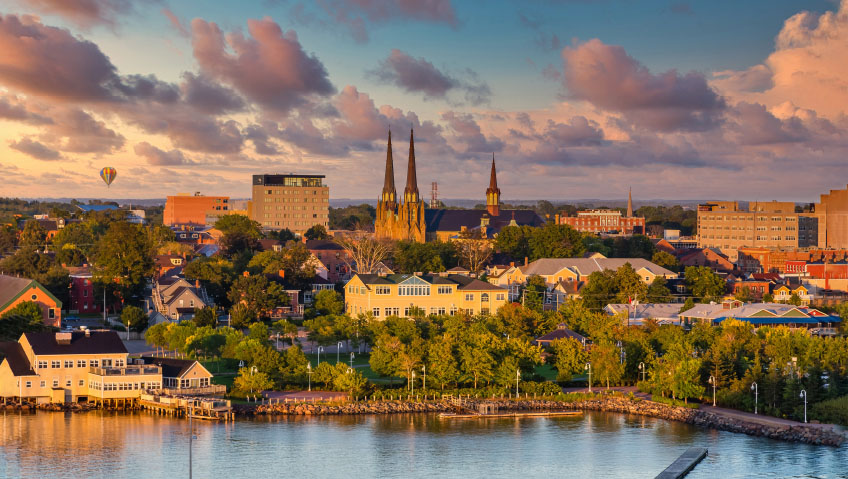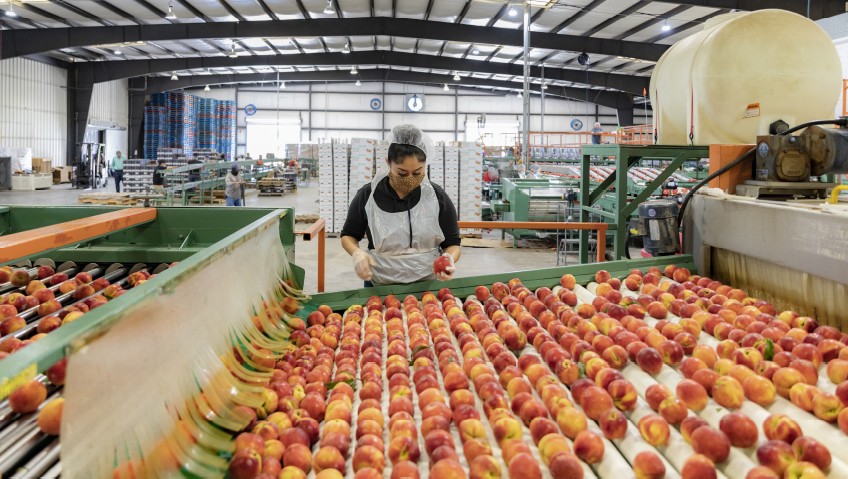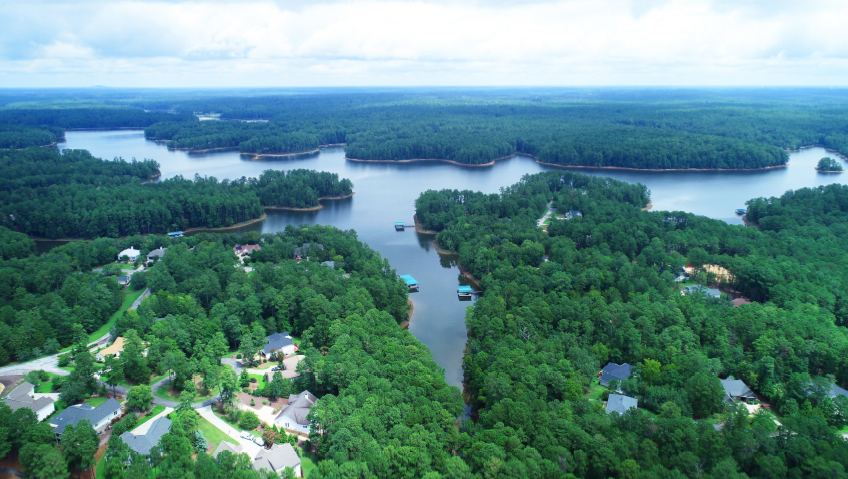From bike lanes to new roads to promoting alternative ways of getting around, Prince Edward Island (PEI) is committed to actively investing in all forms of transportation.
At just 5,683.91 square kilometres (2,194.57 square miles), Prince Edward Island is the smallest of Canada’s 13 provinces and territories, yet one of the most beloved. Offering something for everyone, PEI is famous for its white sandy beaches, striking red sandstone cliffs, and picturesque villages. Home to many festivals, farmers markets, and events, one of PEI’s biggest draws remains Anne of Green Gables.
Visitors from around the world come to experience the Green Gables Heritage Place for themselves, celebrating the enduring story of the little redheaded orphan Anne Shirley as envisioned by local author Lucy Maud Montgomery.
While many know PEI for its parks, scenery, history, and countless attractions, it also once had a reputation as a challenging place to reach. As an island in the Gulf of St. Lawrence, movement of people and goods to and from PEI across the Northumberland Strait was done by ferry and air, and was relatively costly. That changed in 1997 when the island was joined to the mainland via the 12.9 km (eight mile) long Confederation Bridge.
With its charming, small-town feel, gorgeous scenery, proximity to shopping and amenities, great school system, and low cost of living, it is no surprise PEI’s population is growing at a rapid rate. Relatively unchanged for years from the 145,000 of a decade ago, PEI’s population sits at over 180,000 today. In 2022, the province’s population increased by 4.3 percent, the highest increase on record.
According to Statistics Canada, PEI’s population could hit 200,000 by late 2026 or early 2027. And while population growth has its benefits, it also brings challenges, such as the need for additional housing, more roads, and improved transportation.
Published earlier this year, the Public Policy Forum’s Atlantic Canada Momentum Index is a report sponsored by the Atlantic Canada Opportunities Agency (ACOA), which works to create economic growth and champions the strengths of Atlantic Canada. According to the report, 17 of 20 indicators “experienced an improvement in PEI, the best performance among the Atlantic provinces,” in the period 2015 to 2021-22. “The strongest growth was in housing starts (15.5 percent), followed by immigration (9.3 percent), non-residential investment (4.3 percent), and BERD (business enterprise in-house expenditure on research and development) spending (4.2 percent).”
In the past year, stories have appeared regularly about Canadians leaving other provinces—Ontario in particular—for a more laidback and less stressful life in PEI. This growth is also taking place alongside an increase in non-permanent residents to the island, which is also affecting the overall rise in population. As of July, it was estimated that there were some 10,000 non-permanent residents of Canada. About 50 percent held work permits, approximately 37 percent were foreign students, and about 13 percent held study and work permits.
The Government of Canada website has links to help people settle in PEI, discussing subjects such as “What you need to know to move to Prince Edward Island,” and “A guide for newcomers to Prince Edward Island.”
All those people, of course, need to get around. Whereas much larger provinces like Ontario and Quebec are struggling with traffic congestion and balancing the needs of drivers, cyclists, and pedestrians, Prince Edward Island is actively creating infrastructure to meet the needs of future businesses and residents. This year alone, the province announced millions of dollars allocated toward new cycling lanes, transportation corridors, and public transportation electrification in the capital city of Charlottetown.
In May, the province announced a joint investment totalling over $7 million between the governments of Canada and PEI to support two active transportation infrastructure projects. Residents and visitors alike will benefit from the construction of new roads. Along with a new 3.1 km (1.86 mile) active transportation corridor along Route 13 in Brookvale, the funds will rehabilitate a combined 25.9 km (16 miles) of three active transportation corridors.
According to the Department of Transportation and Infrastructure, adding 1.2 metres (3.93 feet) of paved shoulders on each side of the road “will provide the public with an easier and safer option to visit popular destinations such as the Confederation Bridge, Cavendish National Park, as well as Mark Arendz Ski Park.” The addition of paved shoulders to Routes 20, 17, and 15 “will encourage travellers across the island to use greener methods of transportation.”
According to Heath MacDonald, Member of Parliament for Malpeque, on behalf of the Honourable Dominic LeBlanc, Minister of Intergovernmental Affairs, Infrastructure, and Communities, “Safe and efficient active transportation corridors will provide residents and tourists with better low carbon emission alternatives to travelling around this beautiful province. Having adequate active transportation infrastructure will help build healthy and sustainable communities, while also improving pedestrian and cyclist safety.”
The announcement is one of 54 infrastructure projects, or project bundles, under the Green Infrastructure Stream. This includes over $171 million from the federal government and a total provincial contribution of almost $153 million. The funding is yet another step in the Atlantic Growth Strategy toward the goal of strengthening local economies, building inclusive communities, and creating well-paying, middle-class jobs.
“The Government of Prince Edward Island is working hard to build a network of safe, welcoming, and healthy communities,” said The Honourable Ernie Hudson, Minister of Transportation and Infrastructure, in a media release. “Expanding active transportation pathways is a great way to connect Islanders, support recreational activities, and help the province reach its net zero goals.”
Along with motor vehicles, pedestrians and cyclists will also benefit from recent additions and improvements to road infrastructure. New paved shoulders will make it easier and safer for vehicles to keep their distance from cyclists. Although there is a one-metre rule already in place, PEI’s cyclists are welcoming the extra margin of safety, especially in areas where roads presently don’t have shoulders.
The move dovetails into federal and provincial initiatives to make Canada greener, shifting away from cars toward other non-traditional means of transportation, like electric bikes and scooters. “E-bikes [power-assisted bicycles] are a cleaner and more efficient mode of transportation when compared to single passenger vehicles,” says the province on its e-bike Incentive webpage.
To further this initiative, PEI is offering eligible Islanders and organizations a $500 rebate for buying an e-bike. Announced in September, the program is aimed at promoting greater adoption of Active Transportation.
PEI residents are eligible for one e-bike rebate per calendar year, and other groups—such as non-profits, businesses, and First Nations Indigenous Organizations—can receive up to five rebates per calendar year. Eligible e-bikes must meet certain criteria, including costing $1,200 or more, having an electric motor of 500 watts or less, and reaching a maximum speed of 32 km/h (19.88 mph).
As a further commitment to cleaner and more affordable methods of transportation, the provincial and federal government recently announced more than $22.7 million toward expanding and electrifying Charlottetown’s public transit.
Known as the “Birthplace of Confederation,” Charlottetown is a vital hub for Islanders. Home to numerous provincial and federal offices, the city is renowned for its attractions, clubs, nightlife, theatres, art galleries, and more. It is also located just 60 minutes away by car from all major points of access.
Recognizing the city’s importance to the entire island, the move will see the construction of a new maintenance facility. Once completed, the facility will have bus storage and maintenance bays, room to house 19 electric buses, seven new electric buses, and three new diesel buses to cover service during the process of electrification.
The project also includes the installation of a new, state-of-the-art 400 kWh solar battery energy storage system (BESS), which will lead to lower energy costs.
“Our government is investing in infrastructure that supports a strong economy, creates jobs, and builds greener, more resilient communities,” said The Honourable Sean Fraser, Minister of Housing, Infrastructure, and Communities in a news release. “The investment we’re making today will improve public transit for thousands of Islanders while lowering our greenhouse gas emissions.”
Sean Casey, Member of Parliament for Charlottetown, added: “Our government continues to support Charlottetown in laying the foundation for a sustainable future in transportation. The new maintenance facility will not only support the arrival of electric buses but also contribute to reducing environmental impact. These projects showcase our shared commitment to innovation, efficiency, and a greener tomorrow.”
As the population of Prince Edward Island continues to grow, investments by the province and the federal government will continue to make PEI easier, safer, and more convenient for residents, tourists, drivers, cyclists, and pedestrians alike.






